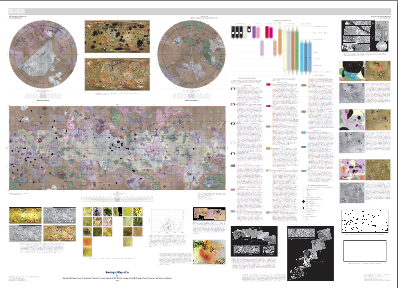


|

|
 |
|
First global geology map of Io DR EMILY BALDWIN ASTRONOMY NOW Posted: 20 March 2012 The first complete geological map of Jupiter's moon Io has been published by the U.S. Geological Survey, depicting active volcanoes and lava flows and highlighting a notable absence of impact craters.  The colourful surface of Io is painted in silicate lavas, sulphur and sulphur dioxide deposits. This image was created by combining images from the Voyager 1 and Galileo missions. Image: NASA/JPL/USGS. Fiery Io, discovered by Galileo in 1610, is subject to extreme tidal heating as a result of its proximity to host planet Jupiter. Its crust is rapidly flexed as it careers around the giant planet, inducing intense heating in its interior that is released through hundreds of active volcanoes on its surface, the first observation of which was claimed by NASA's Voyager 1 spacecraft in 1979. The new map, which was composed from data collected by Voyager 1 and 2, and the Galileo spacecraft, identifies 19 different types of surface material including volcanic deposits, plains and mountains. No less than 425 individual volcanic centres, or paterae, are highlighted alongside vast expanses of sulphur and sulphur dioxide-rich plains.  The new map can be downloaded from the USGS. Twenty-five times more volcanically active than our own planet Earth, the extent of Io's volcanism is reflected in the notable absence of impact craters – Io is the only object in the Solar System to not posses any visible craters – which have long since been buried by lava flows. Much of Io's long-term surface changes resulting from volcanism are restricted to less than 15 percent of its surface area, however. “Our mapping has determined that most of the active hot spots occur in paterae, which cover less than three percent of Io’s surface,” says David Williams of Arizona State University, who led the six year research project. “Lava flow fields cover approximately 28 percent of the surface, but contain only 31 percent of hot spots. Understanding the geographical distribution of these features and hot spots, as identified through this map, are enabling better models of Io’s interior processes to be developed.” The map will also help target observations for future missions to the Jupiter system, as well as track the history of surface changes due to volcanic activity. The new map can be downloaded from the USGS here. |
|
|
|
|